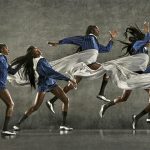Bauer Performance Sports, in its first report since going public on March 10, reported revenues jumped 46.4 percent in its fiscal third quarter ended Feb. 28, to CN$48.4 million. Ice hockey equipment revenues grew 38 percent in the quarter while apparel revenues increased 22 percent. Also contributing to revenue growth was the June 2010 purchase of Maverik Lacrosse, whose sales were not included in reported revenues for the year-ago period.
The net loss widened to CN$10.9 million, or 10 cents a share, from CN$7.3 million, or 7 cents a share, but the latest quarter's results were particularly impacted by an unrealized loss on derivatives (forward contracts) of CN$9.3 million. Without the unrealized loss on foreign exchange contracts, the net loss would have been CN$4.9 million, a 36 percent improvement over the prior period's loss of CN$7.6 million.
Adjusted EBITDA was reduced 36 percent to a loss of CN$2.8 million from CN$4.4 million during the third quarter of 2010. Gross margins climbed to 32 percent of revenues from 24 percent in the third quarter of 2010. Bauer has historically generated lower revenues than other quarters and negative EBITDA during the third quarter of each year.
“Most of our recent market share gains in hockey have come at the elite level, an important sector where we are committed to leadership,” said CEO Kevin Davis on a conference call with analysts.
“Based on our current order file, we are clearly taking share at the recreational and performance levels as well,” continued Davis. “In addition, we are expanding our distribution network and continuing to see exciting opportunities in all regions, including eastern Europe and Russia, where hockey participation rates are growing more than twice as fast as the industry.”
Bauer 's orders for its 2011 “Back to Hockey” season (April-September 2011) were CN$178.4 million, up approximately 32 percent over the 2010 season.
“We believe that our customers are placing more of their total orders in the form of booking orders and as such we do not expect a year-over-year increase in repeat orders of nearly the same magnitude,” Davis told analysts. However, Bauer is “very excited about this shift as it indicates continued retailer confidence in our brand and our products. It makes our supply chain more efficient and ensures adequate supplies of Bauer product at retail for consumers.”
On the downside, Bauer said it expects continued cost pressures primarily as a result of the appreciation of Asian currencies against the U.S. dollar as well as increased labor rates and raw materials and freight costs.
“To help mitigate these costs, we will continue our ongoing cost-reduction and supply-chain initiatives and, as always, continue to evaluate alternative strategies as they become necessary,” said Davis.









